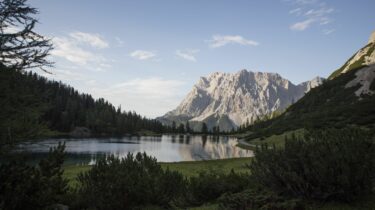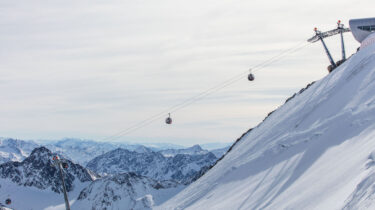Facts and figures on tourism in Tirol
Last updated on 04.12.2025
Tourism in Tirol has a long history. Until the late 19th century, most visitors were traders and travellers on the important north-south and east-west transit routes passing through the region. From the early 20th century, Tirol became increasingly popular as a holiday destination in its own right.
Tirol as a holiday destination
Tourism is an essential part of Tirol’s economy. Almost 25,000 local businesses rely on tourism. With around 50,000 employees, the tourism sector is not only important as a creator of jobs but also drives other fields such as crafts and trade.
Upswing in tourism
The earliest visitors to Tirol, who arrived more than 200 years ago, were members of the ruling elite embarking on elaborate journeys to educate themselves and broaden their horizons. From the middle of the 19th century, more and more people found themselves drawn to the mountains during the hot months of the year to cool off. Alongside summer tourism, mountaineering soon became the second mainstay of tourism in the region. It was not until the early 20th century that winter tourism began to develop.
Tourism in Tirol took off in earnest after the Second World War. This enabled even peripheral regions such as the valleys to enjoy economic development and prosperity. Until the mid-1990s, summer was the more important of the seasons – and in 1991 it brought Tirol its best result to date with just over 23 million overnight stays.
In 2018/19, the last full tourism year before the Coronavirus pandemic, 27.5 million overnight stays were recorded in winter compared with 22.2 million overnight stays in summer, representing a ratio of 55:45 %.
Tourism year 2024/25
The tourism year 2024/25 (from 1st November 2024 to 31st October 2025) closes again on a positive note: overnight stays rose by 1.7 % to 49.6 million, while arrivals climbed 3.1 % to 12.8 million. The average length of stay for visitors to Tirol held steady at 3.9 days, on par with last year’s figure.
The 2024/25 winter season also closed on a positive note: 26.4 million overnight stays represents a modest increase of 1.4% compared to the previous year. Arrivals reached 6.1 million, up 2.7%. As arrivals grew faster than overnight stays, the average stay dipped slightly to 4.3 days, just below last winter’s 4.4. According to calculations by the Tourism Department of the Management Centre Innsbruck, tourism contributed €3.6 billion to the local economy —adjusted for inflation, that’s 0.3% below last winter’s result.
Tirol can also look back on a positive summer season. Despite challenging conditions – an uncertain economic climate and a damp July – Tirol remains a popular holiday destination. 6.7 million arrivals were recorded between April and October 2025, an increase of 3.4 % compared to last year. Overnight stays rose by 1.9 % to 23.2 million, coming close to the record summer of 1991, which reached 23.6 million. Value creation also highlights this steady performance: the Tourism Department of the Management Centre Innsbruck, estimates it at €2.6 billion for this year’s summer season. Adjusted for inflation, that represents a growth of 2.0%.
Facts
- In the tourism year 2024/25 (1st November 2024 until 31st October 2025), there was an increase in overnight stays compared with the previous tourism year 2023/24. 49.6 million overnight stays mean an increase of 1.7%. The number of arrivals also increased by 3.1% to 12.8 million.
- The average length of stay for guests visiting Tirol was 3.9 days in the tourism year 2024/25, which is on par with the previous year.
- With 54% of all overnight stays, Germany remains the most important market. In second place is the Netherlands with 11,3%, followed by Austria in third place with 8.2%. Switzerland comes in fourth with 4.4 %, followed by Belgium with roughly 3 %.
Sources: Provincial statistics Tirol, WIFO & Statistics Austria, Management Center Innsbruck
The role of Tirol Werbung in the region’s tourism industry
Tirol Werbung is Tirol’s regional tourism board. Its mission is to boost the desirability of Tirol as a tourist destination. In doing so, the company focuses on clearly defined target groups – both holiday guests and business travellers. The key objectives comprise of the following areas of activity:
- Inspirational communication that assures potential guests of a relaxing and eventful stay in the heart of the Alps
- Brand management within a tourism context in order to increase the desirability of Tirol as a tourist destination in a target-oriented manner
- Recognising trends and proactively addressing superordinate challenges, as well as developing collaborative, future-oriented solutions with partners
- Cooperation with interested partners to attract potential guests
A subsidiary of Lebensraum Tirol Gruppe
Since 1 January 2019, Tirol Werbung GmbH has been part of the Lebensraum Tirol Gruppe, alongside Standortagentur Tirol and Agrarmarketing Tirol. The umbrella organisation, Lebensraum Tirol Holding, is the sole owner of all three subsidiaries. It also oversees the Tirol brand, steering its strategic direction for the region as a whole.
Tirol’s tourism strategy
Tirol’s tourism strategy is set out in the „Tirolean Way 2021“. This strategy paper is based on four core drivers from which fields of action and measures are derived:
- Tirol is a place where people both live and spend their holidays
- Tirol’s tourism industry is family-based and cross-generational
- Tirol is a recognised for its leadership expertise in alpine tourism
- Sustainability and regional focus
F.acT
For the latest detailed statistics on tourism in Tirol, please visit the website of F.acT – the Center for Tourism, Research and Media. Run by the Tourism Department of the Management Center Innsbruck together with the University of Innsbruck, it offers a huge amount of data and information via its online platform: www.fact.tirol.


